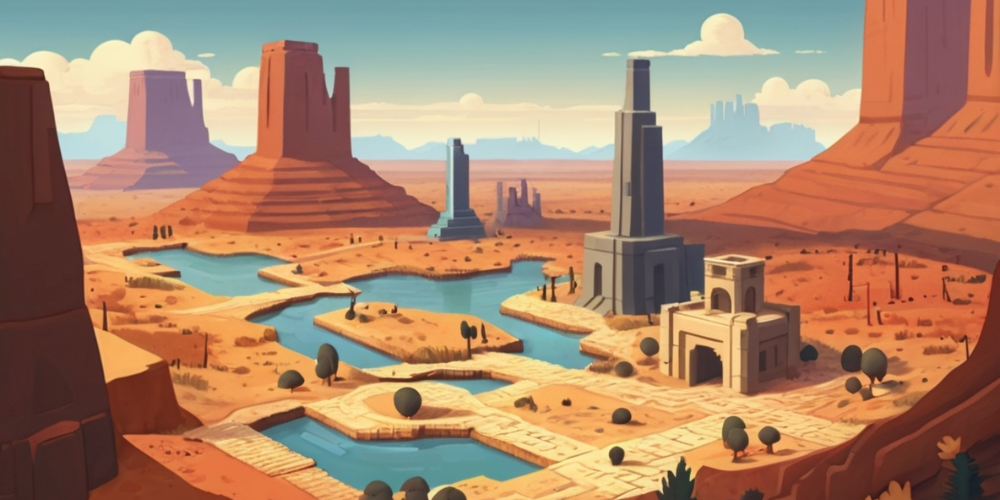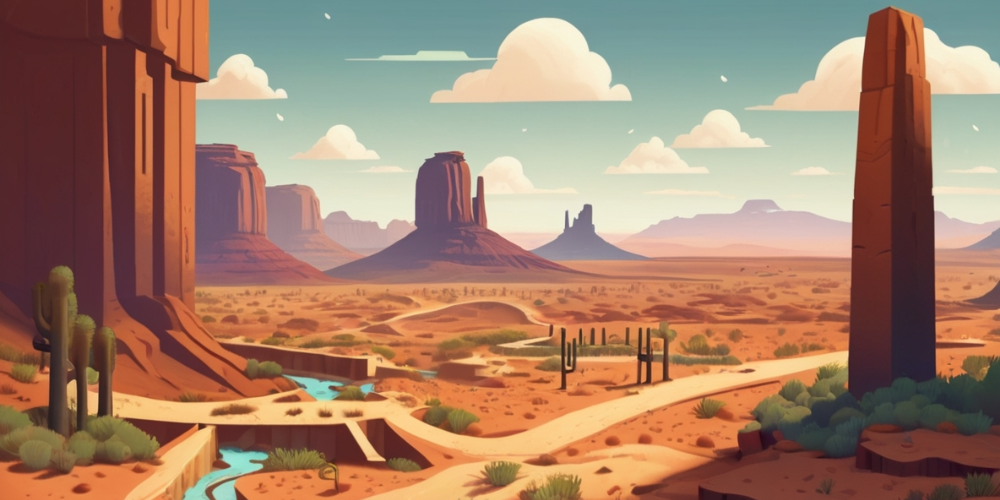Lessons from Monument Valley: Storytelling Through Puzzles
- 2024-07-19
- 0
When I first downloaded Monument Valley on my phone, I did so largely out of curiosity. I had heard friends rave about the game’s stunning visuals and captivating puzzles, but it wasn’t until I embarked on this adventure myself that I understood the true magic within its minimalistic design. The game seemed simple at first glance, but beneath its polished exterior lay a storytelling prowess that drew me in deeper with each level.
The Mesmerizing Visuals
From the moment I opened Monument Valley, I was greeted with an art style that I can only describe as a visual symphony. Geometric landscapes and vibrant color palettes combined to create levels that resembled fantastical M.C. Escher paintings. Each stage was a testament to the idea that simplistic design doesn’t equate to simplicity in execution. Transcendent and ethereal, the visual aesthetics of Monument Valley were clearly a love letter to the art of illusion.
An Enigmatic Protagonist
Taking on the role of Ida, the silent princess adorned in white, the game led me on a quest to find her place in an enigmatic world. The lack of dialogue brought forth an intriguing air of mystery, allowing me to project my own emotions and theories onto Ida’s journey. I appreciated how the developers used minimalism not only visually but narratively as well, creating a sense of intimacy between the player and the protagonist.

Puzzle Mechanics That Challenge the Mind
The core mechanic of Monument Valley revolves around manipulating the architecture of each level to guide Ida to her goal. Throughout my playthrough, I rotated, shifted, and reimagined pathways to reveal impossible structures that miraculously made sense within the game’s rules. I was particularly struck by how the puzzles were designed; they were challenging enough to make me pause and think, but never so difficult that I felt disconnected from the story. Each solved puzzle was a quiet victory, pushing me further along Ida’s path.
The Soundscape: A Symphony of Serenity
Complementing its visual splendor, the sound design of Monument Valley enveloped me in a blanket of tranquil melodies and ambient sounds. Each step Ida took was accompanied by a gentle musical note, creating a hypnotic rhythm that eased my mind and helped me focus on the puzzles. The ethereal tones added another layer of immersion, making it easy to lose myself in the meditative flow of the game.
Environmental Storytelling
One of my favorite aspects of Monument Valley was how it told its story without words. Through environmental cues—such as changing weather, shifting hues, and unfolding architecture—the world evolved around Ida in subtle yet significant ways. Each chapter revealed more about the lands I was traversing, and I found myself piecing together the narrative like a puzzle in its own right.
Emotional Resonance
Though Monument Valley is often praised for its visual and puzzle design, it was the emotional undertones that truly captivated me. Ida’s moments of solitude, her encounters with ghostly totems, and the presence of an omnipotent crow creature all contributed to a hauntingly beautiful emotional journey. By the time I reached the game’s climax, I felt a profound connection to Ida and her mysterious quest.

Innovative Use of Perspective
Monument Valley’s use of perspective manipulation stands out as one of its most innovative features. By introducing optical illusions and forced perspectives, the game challenged me to rethink how I viewed reality within its world. Moving platforms seemed to intersect and paths appeared where there were none, making each puzzle a delightful revelation. This mechanic not only enriched the gameplay but also echoed philosophical questions about perception and reality.
Integration of Architectural Elements
As someone with a keen interest in architecture, I was particularly fascinated by how Monument Valley incorporated architectural elements into its level design. The buildings and structures were inspired by various architectural styles, from ancient ruins to futuristic constructs. This blend of old and new created a timeless aesthetic, making each level feel both familiar and otherworldly.
The Role of Color and Light
Color and light played crucial roles in Monument Valley’s storytelling. Each chapter was bathed in a specific color scheme that set the mood and tone, guiding me emotionally as I navigated through the puzzles. The clever use of shadows and highlights added depth to the two-dimensional landscapes, making them feel more like living, breathing worlds. These visual cues subtly influenced my perception and understanding of the narrative.
Elegance in Simplicity
Monument Valley’s interface and controls were elegantly simple, allowing for an intuitive gaming experience. With just a swipe of my finger, I could move Ida or rotate parts of the environment. This simplicity ensured that the game was accessible without sacrificing depth. The seamless control scheme allowed me to fully immerse myself in the game’s world without the distraction of complicated mechanics.
Thematic Depth
Beyond its immediate visual appeal, Monument Valley explored deeper themes such as loneliness, discovery, and the quest for self-understanding. Each level felt like a metaphor, with Ida's journey representing a deeper, introspective exploration. This thematic richness added layers of meaning to the seemingly simple puzzles, offering me the chance to reflect on my own experiences and emotions.
Connection Between Sound and Gameplay
I found that the synchronization between sound and gameplay elevated the overall experience. The musical score was dynamic, changing in response to my interactions with the world. Whether it was the serene hum of shifting structures or the haunting melodies accompanying mysterious new areas, the sound design was intricately tied to the gameplay, heightening the sense of immersion.

Versatility and Replayability
While Monument Valley can be completed in a relatively short amount of time, its intricate design and hidden details offered significant replayability. Each time I revisited a level, I noticed new aspects and found additional layers of storytelling that I had missed during previous playthroughs. This versatility ensured that the game remained engaging and worth returning to.
A Journey Through Art
Monument Valley felt like a journey through a gallery of interactive art. Every stage was carefully crafted, inviting me to appreciate the intricate details and thoughtful design elements. This artistic essence set the game apart from others in the genre, making each moment feel unique and significant.
Accessibility and Appeal
One of the most commendable aspects of Monument Valley was its broad appeal. With its user-friendly interface and broad themes, the game appealed to a diverse audience, transcending age and gaming expertise. This inclusivity allowed me to share the game with friends and family, sparking discussions and shared moments of wonder.
The Influence of Monument Valley
Discovering Monument Valley demonstrated the potential of video games as a compelling medium for storytelling and artistic innovation. Its success has inspired countless other games to prioritize aesthetic and narrative elements, proving that a game can be both thought-provoking and visually stunning. I found Monument Valley to be a trailblazer, redefining what a mobile game could achieve.
In my experience, Monument Valley was much more than a puzzle game; it was an explorative journey through art, emotion, and ingenuity. Each level, each twist of architecture, and each note of music contributed to a holistic experience that left a lasting impression on me.






Leave a comment
Your comment is awaiting moderation. We save your draft here
0 Comments